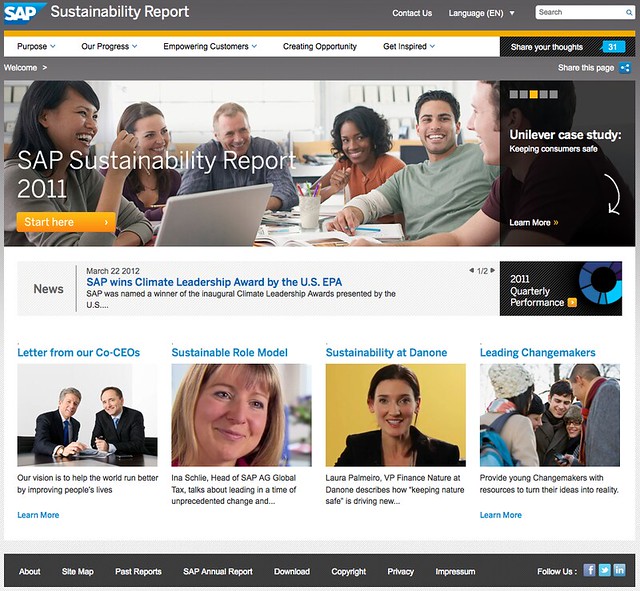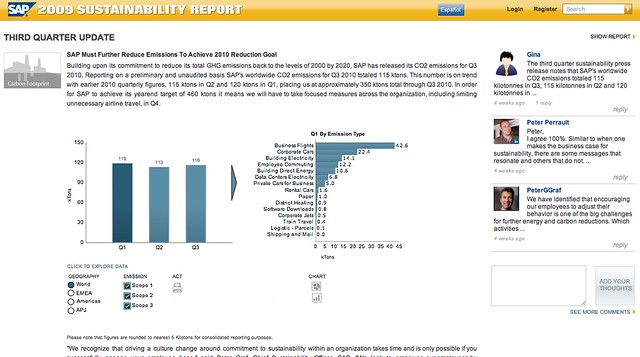SAP released their first Sustainability report in 2008 (their 2007/2008 report). Like the reports of most other companies at the time, it was released as a PDF document but SAP quickly shifted gears. SAP’s 2008 Sustainability report, was released as a website. This had the dual purpose of making the site more accessible, and also allowing SAP to see which areas of the site had more traction. The following year they made their report more social and every year since they have added something new.
As well as releasing its Sustainability reports each year, SAP also published its annual financial reports. This year, for the first time, SAP have integrated the two reports and they have just published their SAP Integrated Report 2012. It takes the form of a highly interactive website with built-in analytics and downloadable PDF’s.
This was an idea GreenMonk first mooted when I asked SAP’s Chief Sustainability Officer Peter Graf in a 2011 interview whether SAP had any plans to integrate the two documents.
On a conference call at the launch of the integrated report, SAP Chief Accounting Officer Christoph Hütten went to great pains to stress that this wasn’t merely the content of both reports in one, but that the content was very tightly bound together. The report demonstrates how connections and inter-dependencies between financial and non-financial performance impact each other, he said.
The document/website contains all the financial and sustainability-related information you would expect to find in reports of this type. And the report also has a nice page showcasing and explaining the connections between the financial and non-financial performance.
Other nice features of the report are an integrated tweetstream showcasing mentions of the #sapintegrated hashtag on some pages, an option to make notes on pages (with the ability to download those pages as PDF’s subsequently), and the download centre for downloading the annotated pages, as well as financial statements, graphics and other reports.
For the first time also, SAP are releasing their 2012 sustainability information in XBRL format (.zip file) – something GreenMonk also suggested to SAP back in 2011. If you are unfamiliar with XBRL, it is an XML-based global standard for exchanging business information.
Impressive as well was the fact that at the end of the conference call launching the report, Peter Graf mentioned that SAP are actively looking to co-innovate. He asked that anyone, be they in the financial or sustainability reporting space, who is interested in integrated reporting get in touch with him to work together to bring integrated reporting to everyone “at the lowest possible cost and highest possible precision”.
The video above is a demo of the report and I have placed a transcript of the video here.






